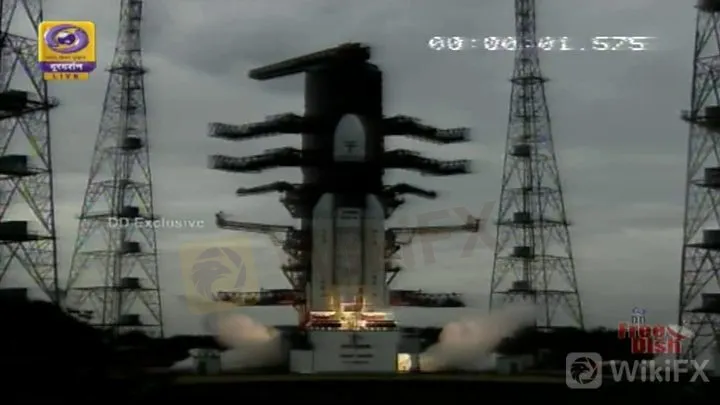简体中文
繁體中文
English
Pусский
日本語
ภาษาไทย
Tiếng Việt
Bahasa Indonesia
Español
हिन्दी
Filippiiniläinen
Français
Deutsch
Português
Türkçe
한국어
العربية
Chandrayaan-2: India aims for soft landing on Moon's south pole
Abstract:Image copyrightIsroImage caption The mission's lift-off was broadcast live to an audience of hundred
The mission's lift-off was broadcast live to an audience of hundreds of millions
India is preparing to become the first country to land a mission on the south pole of the Moon.
Chandrayaan-2 entered the Moon's orbit on 20 August, a month after take-off.
The lander it's carrying is due to make the historic touchdown on the unexplored south pole at about 20:00GMT on Friday (01:30 Indian time Saturday).
If successful, India will become only the fourth country to make a soft landing on the lunar surface, after the former Soviet Union, the US and China.
India's first Moon mission - Chandrayaan-1 in 2008 - carried out the first and most detailed search for water on the lunar surface using radars.

Media playback is unsupported on your device
Media captionChandrayaan-2 was launched on 22 JulyWhat is this mission all about?
Chandrayaan-2 (Moon vehicle 2) is the most complex mission ever attempted by India's space agency, Isro. “It is the beginning of a historical journey,” Isro chief K Sivan said after launch in July.
The lander (named Vikram, after the founder of Isro) carries within its belly a 27kg Moon rover with instruments to analyse the lunar soil.
India's grand ambitions in second Moon mission
In its 14-day life, the rover (called Pragyan - wisdom in Sanskrit) can travel up to a half a kilometre from the lander and will send data and images back to Earth for analysis.
The mission will focus on the lunar surface, searching for water and minerals and measuring moonquakes, among other things.
Why is it significant?
A soft landing on another planetary body - a feat achieved by just three other countries so far - would be a huge technological achievement for Isro and India's space ambitions, writes science writer Pallava Bagla.
He adds that it would also pave the way for future Indian missions to land on Mars, and open up the possibility of India sending astronauts into space.
For the first time in India's space history an interplanetary expedition is being led by two women - Muthaya Vanitha, the project director, and Ritu Karidhal, the mission director.

Media playback is unsupported on your device
Media captionIs India a space superpower?
It's also a matter of national pride - the satellite's lift-off in July was broadcast live on TV and Isro's official social media accounts.
The mission has also made global headlines because it's so cheap - the budget for Avengers: Endgame, for instance, was more than double at an estimated $356m. But this isn't the first time Isro has been hailed for its thrift. Its 2014 Mars mission cost $74m, a tenth of the budget for the American Maven orbiter.
Read more about India's space ambitions
Why India's Mars mission is so cheap - and thrilling
Why is India sending humanoid robots into space?
Four reasons India is going big on space
How did Chandrayaan-2 get to the Moon?
Its six-week long journey was a lot longer than the four days Nasa's Apollo 11 mission took 50 years ago to land humans on the Moon for the first time.
But Isro chose a circuitous route to save fuel - it took advantage of the Earth's gravity, which helped slingshot the satellite towards the Moon.
The satellite then stayed in the Earth's orbit for 23 days before it began a series of manoeuvres that took it into lunar orbit.
Disclaimer:
The views in this article only represent the author's personal views, and do not constitute investment advice on this platform. This platform does not guarantee the accuracy, completeness and timeliness of the information in the article, and will not be liable for any loss caused by the use of or reliance on the information in the article.
WikiFX Broker
Latest News
CWG Markets Got FSCA, South Africa Authorisation
Amazon launches Temu and Shein rival with \crazy low\ prices
CySEC Warns Against Unauthorized Investment Firms in Cyprus
JUST Finance and UBX Launch Multi-Currency Stablecoin Exchange
XM Revamps Website with Sleek Design and App Focus
TradingView & Mexico’s Uni. Partnership, to Enhance Financial Education
Something You Need to Know About SogoTrade
Global Shift in Cryptocurrency Taxation: Italy and Denmark Chart New Paths
Webull Introduces 24/5 Overnight Trading to Extend U.S. Market Access
eToro Launches Global-Edge Smart Portfolio: A Balanced Approach to Growth and Stability
Currency Calculator


